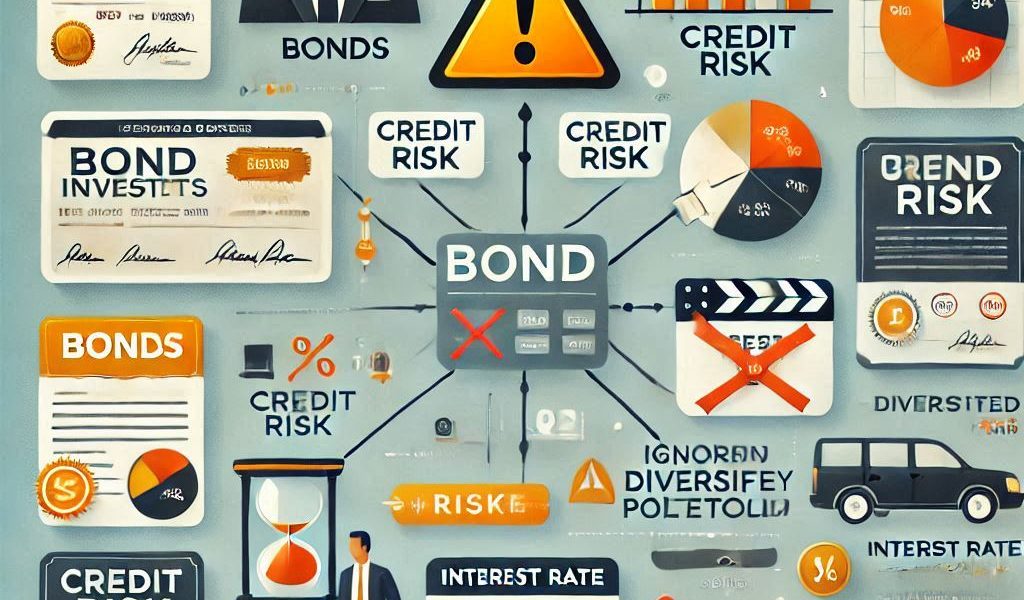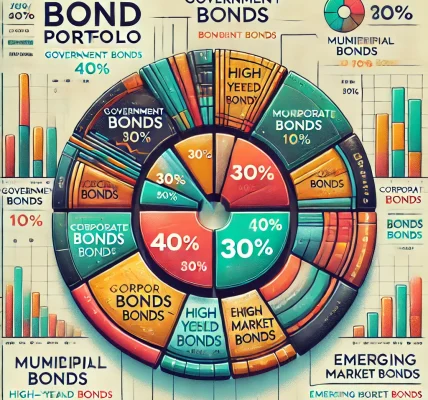Bonds are often seen as a safer investment option, offering predictable returns and lower risk compared to stocks. However, even experienced investors can make mistakes when investing in bonds. Understanding how to avoid common bond investment pitfalls is essential to ensure you’re making smart financial decisions and maximizing returns.
In this blog, we will explore the most common mistakes that bond investors make and provide practical tips on how to avoid them. Whether you’re new to bond investing or looking to refine your strategy, this guide will help you navigate the bond market with confidence.
1. Ignoring Interest Rate Risk
One of the biggest mistakes bond investors make is ignoring the impact of interest rates on bond prices. Bonds have an inverse relationship with interest rates — when interest rates rise, bond prices fall.
How to Avoid This Mistake:
- Stay informed about interest rate trends: Pay attention to central bank decisions and economic indicators that might signal changes in interest rates.
- Consider the bond’s duration: Long-term bonds are more sensitive to interest rate changes. If you anticipate rising rates, you may want to favor short-term bonds to reduce exposure to price fluctuations.
2. Overlooking Credit Risk
Credit risk refers to the chance that a bond issuer will default on its debt obligations. Higher-yielding bonds often come with higher credit risk, such as bonds from companies with lower credit ratings (junk bonds).
How to Avoid This Mistake:
- Assess the issuer’s credit rating: Before investing, research the credit ratings assigned by agencies like Moody’s, S&P, and Fitch. Ensure that the bond fits your risk tolerance.
- Diversify your bond holdings: Diversification can help mitigate the risk of any single bond defaulting and impacting your portfolio.
3. Chasing High-Yield Bonds Without Understanding the Risk
It can be tempting to chase high-yield bonds, particularly those with lower credit ratings (junk bonds), for their potential for greater returns. However, these bonds come with much higher risks, including the chance of default.
How to Avoid This Mistake:
- Understand the risk-return tradeoff: Higher yields typically come with higher risk. Only invest in high-yield bonds if you’re comfortable with the potential for volatility and loss.
- Conduct thorough research: Always assess the issuer’s financial health before purchasing any bond with a higher yield. Look at factors like debt levels, revenue stability, and overall creditworthiness.
4. Not Paying Attention to Tax Implications
Bonds can have different tax implications depending on the type of bond. For instance, municipal bonds are often tax-exempt, while other bonds may be subject to federal or state taxes. Ignoring tax implications can lead to lower-than-expected returns.
How to Avoid This Mistake:
- Understand the tax treatment of different bonds: Municipal bonds may offer tax advantages, but corporate bonds may be taxable. Be sure to factor in the tax consequences when evaluating the potential return of a bond.
- Consult a tax advisor: If you’re unsure about the tax implications of bond investments, it’s worth consulting a financial advisor or tax professional to maximize your after-tax returns.
5. Failing to Diversify Bond Investments
Investing too heavily in one type of bond, such as government bonds or bonds from a single issuer, can expose you to significant risk. If something goes wrong with that issuer or bond type, it could heavily impact your portfolio.
How to Avoid This Mistake:
- Diversify across bond types: Hold a mix of government bonds, corporate bonds, and municipal bonds in different sectors to spread out your risk.
- Diversify by credit rating: Mix investment-grade bonds with some higher-risk (but potentially higher-return) bonds, such as junk bonds, if appropriate for your risk tolerance.
6. Timing the Market Instead of Focusing on Long-Term Goals
Trying to time the bond market based on short-term interest rate movements can be a losing strategy. While market fluctuations can present opportunities, timing the market can lead to missed opportunities and unnecessary risk.
How to Avoid This Mistake:
- Stick to your investment strategy: Focus on your long-term goals and avoid making impulsive decisions based on short-term market movements.
- Invest regularly: Consider a dollar-cost-averaging strategy, where you invest a fixed amount in bonds at regular intervals, regardless of the market’s performance. This reduces the risk of making poor decisions based on market timing.
7. Neglecting to Rebalance Your Bond Portfolio
Over time, your bond portfolio may become unbalanced due to changes in interest rates, market conditions, and the performance of your bonds. Failing to rebalance your portfolio could result in excessive exposure to certain types of bonds or risk.
How to Avoid This Mistake:
- Review your portfolio regularly: Assess your portfolio’s performance periodically to ensure it still aligns with your risk tolerance and investment goals.
- Rebalance as needed: If one type of bond has grown too large a proportion of your portfolio, consider reallocating funds to maintain the right balance of risk and reward.
8. Not Understanding the Bond’s Terms and Conditions
Before purchasing any bond, it’s important to thoroughly read and understand the bond’s terms. Not understanding the bond’s maturity date, coupon payments, call provisions, and other important features could result in unpleasant surprises.
How to Avoid This Mistake:
- Read the bond’s prospectus: Understand the terms of the bond before buying. Know the bond’s maturity date, coupon rate, and whether it has call provisions or other features that could affect your investment.
- Ask questions: If you’re unsure about any of the terms, consult with a financial advisor who can help clarify any complexities.
9. Focusing Only on High-Quality Bonds
While high-quality bonds (like government bonds) offer safety, they may not provide the best returns. Over-relying on them may limit the potential growth of your portfolio.
How to Avoid This Mistake:
- Include a mix of bond types: While high-quality bonds are essential for a balanced portfolio, consider adding some riskier bonds to potentially increase your returns.
- Assess your risk tolerance: Find a balance that aligns with your risk profile. If you’re willing to take on more risk, adding corporate or high-yield bonds can improve returns.
Conclusion
Bonds can be a valuable part of your investment portfolio, offering stability, predictable income, and lower risk. However, as with any investment, there are potential pitfalls that can impact your returns. By avoiding common bond investment mistakes such as ignoring interest rate risk, overlooking credit risk, and failing to diversify, you can ensure that your bond investments are working in your favor.




